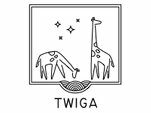Our Services
The Digital Platform is for dissemination and receiving data to and from farmers. AI data such as rainfall, yield, or soil moisture content data from TWIGA partners will be sent through the platform to the farmers’ mobile phones. The farmers will be able to send the size of their farm, the GPS coordinates of the farm, type of index insurance (weather index or yield index) through their mobile phone through the platform. The farmers will pay the premium through mobile money technology and a simple insurance policy will be issued to the farmer through the platform onto the farmers’ mobile phone.
This service provides localised weather forecasts, ranging from 10-day to near real-time, to improve (the timing of) agricultural practices. In-situ observations facilitate the provision of accurate local information and (in combination with mobile apps) timely delivery to the farmer. The aim is to send alerts (e-mail, SMS, voice message, app notification) to individuals when the weather forecast conditions urge for action. For example, putting out fires when wind speeds are above a threshold, taking laundry (or other non-water-resistant things) inside when rain is approaching, bringing cattle to the shade/inside when temperatures are too high or low.
This early warning system service on flooding in plain areas and settlements in urban areas focuses on Narok County in southwestern Kenya. It is a pilot project centered on understanding the user needs and requirements for climate information and its application in decision making. It involves the collection of in-situ observations and development and provision of weather information for monitoring and forecasting urban flooding to improve the resilience of local communities living in the area.
This service develops a short-term prediction for the amount of solar radiation reaching the surface, by extrapolating cloud movements and daily cloud formation patterns. This product will allow solar power operators to determine the efficiency of power generation for a period of 1-3 days in advance. The provision of solar radiation products can be done in the form of general solar radiation forecasts or tailor-made for a specific client through a web portal, a mobile app, or an FTP service.
In South Africa, where drought is very common, insight into water availability is crucial for water managers. Water managers need tools to easily investigate the volumetric dynamics of dam-lakes, the most important freshwater reservoirs in the area. By creating real-time water balances, the most basic tool of a hydrologist, water managers can learn more about their most important water reservoirs and anticipate water scarcity.
This service provides a water control room with shared country weather- and water-related data in order to internationally manage shared catchments. The service will consist of a dashboard functionality with the ability to configure traffic-light maps, graphs, and other relevant visualizations.
Map your crop
Drones (Flying Sensors) can unobtrusively inspect fields and inform farmers about crop status, allowing them to detect subtle changes that cannot be readily identified at the ground level. This can include assessment of water status and water stress effects, chlorophyll content estimation, nutrient status, weed management, crop pest control, and soil properties. This information can be disseminated as a farm management service, by providing advice on fertilizer and pesticide application, irrigation demand, crop insurance, etc.
Drought Monitoring
InfoSequia is the Drought Early Warning and Forecasting System developed by FutureWater to support the decision-making and risk management of drought impacts. InfoSequia rests on an advanced cloud computing and geoprocessing architecture able to effectively integrate large volume of data from satellite, reanalysis and ground-observation networks, with machine learning techniques to generate local-tailored seasonal outlooks of drought risk failures at the river basin and agricultural district levels.
How humid is my environment?
Irrigation is needed when an environment is too dry. When an environment is (too) humid for a longer period, plant diseases tend to develop. This service provides farmers, or farm-input providers, with advice on when irrigation is needed and when spraying for certain diseases is needed. Advice is sent via a mobile application estimating how wet the soil is in four classes: Dry, Moist, Very moist, Saturated.
Soil Index for crop insurance
This crop insurance product will utilize soil moisture conditions for pay-outs instead of only rainfall (this will include yield and germination insurance). The soil moisture will be determined using satellites, soil moisture probes, and DTS (distributed temperature sensing) in 2 pilot locations (Districts) in Northern Ghana. We also propose using a crop model (e.g. DSSAT, AquaCrop) as a way of tailoring the service to particular conditions (e.g. soil type, crop type). This should facilitate the down-scaling of soil moisture data from satellites, interpolating DTS measurements in the vertical direction, and provide a way to identify crop-specific thresholds on which to base the insurance index.
Does it drain
The clogging of waterways increases the risk of flooding. This risk increases in urban areas, where there is a concentration of vulnerable people, infrastructure, possible obstacles (bridges), and waste. This early warning service, therefore, contributes to disaster risk reduction. The service is based on a combination of in situ observations, citizens’ observations, and a model:
- A camera or light sensor takes regular measurements and transforms these into a simple measure of accumulation.
- Citizens report plastic accumulation via a smartphone app, by estimating the volume or degree of channel clogging (small/medium/near-full clogging), including a photo of the condition of the site.
- A model links plastic accumulation to flood probability to establish the critical warning threshold.
GNNS for flood plains & Atmospheric Moisture
One drawback of mapping floodplains with UAVs is that one needs accurately known ground-control points. For accurate mapping, a network of GNSS base stations is needed that is not available in most African countries. With the recent advent of high accuracy mass-produced GNSS receivers (dual frequency), it has become possible to greatly reduce the costs of GNSS base stations. We will pilot this service around Kumasi, Ghana.

